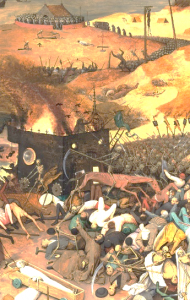by Tony Attwood
If you have read any of my ramblings about cover versions of Bob Dylan’s music in the “Dylan Cover a Day” series, you might just recall regular comments about the recurring problem with Dylan.
We all know each song off by heart – we know the lyrics inside out, and many of us, if pushed (or after a few beers) could probably have a bash at singing along.
So faced with this situation, the cover artist really needs to re-think the song, bring in something new, find a different approach, give it a new twist, that sort of thing.
In which case singing the song in a language which a) 99% of your audience won’t understand a word and b) through its use of sounds gives an utterly different feel to the piece, is an advantage. One is immediately in new territory. Expectations are removed. The listener’s mind opens.
And that is what we have with the “Dylan.pl” double CD: 29 Dylan classics performed by a brilliant band and sung in (what is for me, and will I suspect be for most of my readers) an utterly incomprehensible language: Polish.
Which brings me back to the title of this little piece. “Dylan.pl” is the title but on the front cover there is another text printed sideways which says “Niepotrzebna pogodynka, zeby znac kierunek wiatru”. Actually I am missing a couple of accents in there, and I may have made some spelling mistakes, but I am hoping any errors don’t matter too much…
But more to the point, my translation program tells me, the phrase means “There is no need for a weatherman to know the direction of the wind” which of course you will immediately have translated back into Proper Dylan Speak as the phrase “You don’t need…” etc etc.
Now this really is my point: poetry is damn hard to translate, just as colloquial language can be tough going. Not because each word in Polish doesn’t have an equivalent in English, but because the phrases have meanings beyond the words.
Just consider “There is no need for a weatherman to know the direction of the wind”. That is of course NOT what Dylan wrote in terms of words, but nor is it the meaning of what Dylan wrote. He wrote “…to know which way the wind blows” which normally has an utterly different meaning from “to know the direction of the wind”.
Of course, none of that is to say that Dylan.pl got anything wrong – translate from English to Polish and then use a machine to translate back to English and it is bound to get a bit screwed – and that is absolutely not their fault. But I think it makes the point. There’s more to this “translating the songs” lark than simply looking up the words.
But I don’t want to get bogged down in language, for there is so so so much more here, because the band has, like the very best cover bands, delivered their own interpretation of the music. And this brings me back to my opening point… those of us who don’t speak the language are getting a new interpretation of the songs, without (and this is the main point) the distraction of already knowing all the lines.
And that is interesting, because as I listened to the album I immediately forgot about the originals. It was as if I were listening to new songs. OK familiar tunes, yes, but still something quite new, which I rarely get when listening to covers in English.
And that because a) the lyrics were not there to remind me (as I have so labouriously pointed out) of Dylan’s version, but also because the musical realisation of each piece is not just original but also so highly inventive. These are not Dylan songs sung in Polish but Dylan songs afresh: a completely new look at Dylan’s music in almost every case.
So for me this opens up a whole new area of understanding of Dylan. By performing the songs in a language I do not comprehend, I can strip away all preconceptions and listen to the new interpretations utterly afresh. And that is an incredibly valuable thing to be offered.
You might also be interested in
where we have in the past put up two videos of Dylan.pl performing.
And the sites that sell Dylan.pl albums
https://kulturalnysklep.pl/product-pol-3649-Niepotrzebna-pogodynka-zeby-znac-kierunek-wiatru.html
https://sklep.dalmafon.pl/Dylan.pl-Niepotrzebna-pogodynka-zeby-znac-kierunek-wiatru

